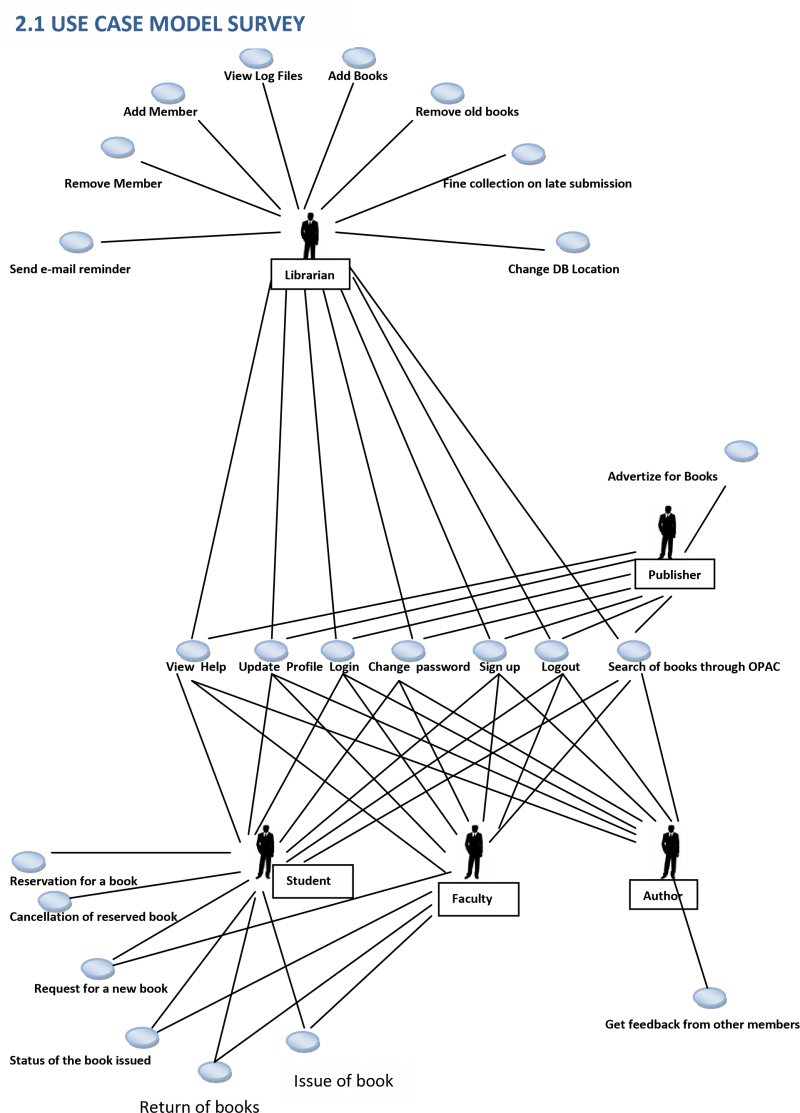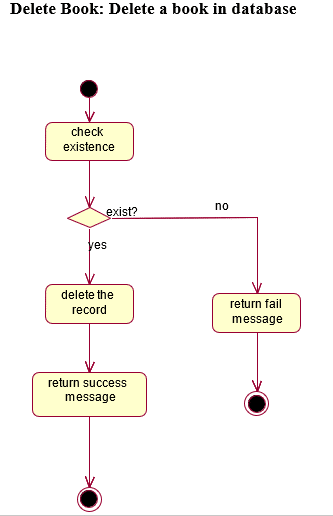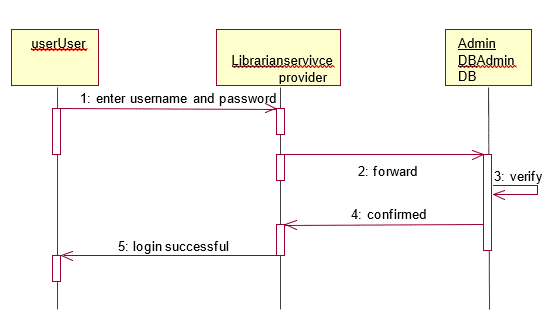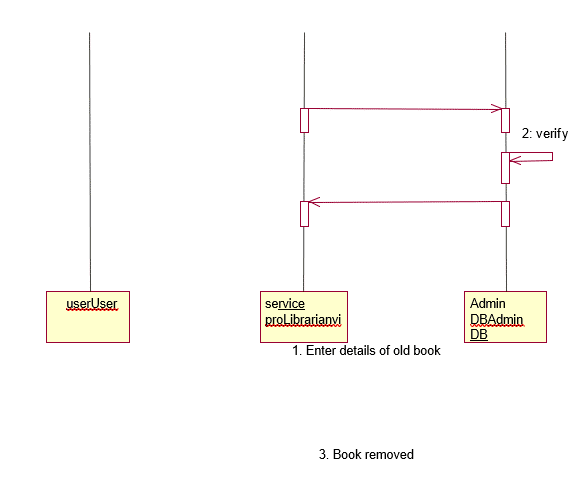Library Reservation System Capstone Project Document
Introduction
Online Library Management System (LiMS):-
This project is an Intranet based application that can be accessed throughout the campus. This system can be used to search for books/magazines, reserve books, find out who is having a particular book, put in requests to buy a new book etc. This is one integrated system that contains both the user component and the librarian component
Purpose:-
The purposes of this application are as follows:
- The software is for automation of library.
- It provides following facilities to
Operator:
- Can enter details related to a particular book.
- Can provide membership to members.
Administrator:
- Can read and write information about any member.
- Can update, create and delete the record of membership as per requirement and implementation plants
Students and Faculty:
- Can login to his account
- Can update his profile ,search for a books, CDs, journals etc and even issue & reserve them
- Can even place requests for purchasing new books to the library.
Author & Publisher:
- Can login to the system and publish advertisement for their books Can request the administrator to add their new books
Scope
The different areas where we can use this application are:
- Any education institute can make use of it for providing information about author, content of the available books.
- It can be used in offices and modifications can be easily done according to requirements.
Definitions, Acronyms and Abbreviations
- User – A general user ID is provided to operator, administrator, students, faculty, author and publishers.
- Data flow diagrams – It shows the data flow between entities.
- Unique key – Used to differentiate entries in a database.
- HTML – Hypertext Markup Language is to create static websites.
- J2EE – Java 2 Enterprise Edition is a programming platform and it is the part of the java platform for developing and running distributed java applications.
- WAS – Web sphere application server community edition is an application server that runs and supports the J2EE and web service applications.
- RSA – Rational Software Architect is a designer toolkit which is designed for develop more complex projects by providing fully dynamic web service.
- DB2 – Database 2 is the database management system that provides a flexible and efficient database platform to erect strong on demand business applications.
- XML – Extensive Markup Language used for data transfer and XML is stored naturally in DB2
- EJB – Enterprise java bean, it is architecture for the development and deployment of transactional, distributed object applications-based, serverside software components.
- HTTP – Hypertext transfer protocol is a transaction oriented client/server protocol between web browser and a web server.
- HTTPS – Secure hypertext transfer protocol is a hypertext transfer protocol over secure socket layer.
- TCP/IP – Transmission control protocol/internet protocol is the communication protocol used to connect hosts on the internet.
Technologies used
- HTML – Hyper Text Markup Language
- Java Script – Script Language
- XML – Extensive Mark Up Language
- JAVA – Application architecture
- J2EE – Application architecture
- EJB – Enterprise Java Bean
- AJAX – Asynchronous Java script And XML
Tools used
- RSA – Rational Software Architect 7.0
- DB2 Express – ‘C’ – Database
- WAS – Websphere Application Server 6.0
- TSM – Tivoli Storage Manager
Overview
- Project is related to library management which provides reading services to its members.
- Any person can become a member of the library by filling a prescribed form.
- They can get the book issued, so that they can take home and return them.
Class Diagram
Activity Diagram Of Each Operation
Student class
Book Class
Sequence Diagram
• User Login
Case 1: EXCEPTIONAL CASE
Case 2: NORMAL FLOW FOR USER LOGIN
-
REGISTERATION/SIGNUP
Case 1: EXCEPTIONAL CASE 1
Case 2: EXCEPTIONAL CASE 2
Case 3: NORMAL FLOW FOR USER REGISTRATION
• Search Through Opac
Case 1: Exceptional Case
Case 2: NORMAL FLOW FOR SEARCH
• Issue Of Books
Case 1: Exceptional Case
Case 2: NORMAL FLOW FOR ISSUE BOOKS
-
Return Of Books
Case 1: Return With Fine
Case 2: NORMAL FLOW FOR RETURN WITHIN DUE DATE
-
Addition Of New Books
• Removal Of Old Books
-
Reservation Of Books
-
Cancellation Of Previous Registration
-
Change Password
E-R Diagram
Specific Requirements
Use Case Reports
Student/Faculty
- Sign Up:
In order to register for various facility of the library he must enter all the details like username, email, member ID, password and various personal details.
- Sign In:
After getting the username and password, end users can log on to their account, can change password and access the library.
- Open profile:
End user can open their profile which contains the personal details which he/she provided during Sign up.
- View profile:
End user can view their profile which contains the personal details which he/she provided during Signup.
- Update profile:
End user can update their profile which contains the personal details which he/she provided during Sign up if any update required.
- Change password:
The end user can change the password after signing in.
- Issue Books:
The end user can issue the books from issue section of the library.
- Return Books:
The end user can return the books. Fine is charged if he/she submits the book after the due date.
- Request for a new Book:
The end user can place a request to add a new book to the library.
- Reserve Books:
The end user can reserve the books prior to its issue if the book is unavailable in the library at present.
- Cancel Books:
The end user can cancel the reservation made.
- Search Books through OPAC:
The books in the library can be searched through parameters like book name, book code, Author, subject name and department.
- Status of a Book:
The end user can check the status of any book.
- Help:
The terms and conditions, rules and FAQs are listed in this category and can be accessed from the end user.
- Sign out:
The user can exit from the application after the book transaction is completed.
LIBRARIAN
- Sign in:
The librarian can sign in and do the various jobs.
- Maintenance:
The librarian maintains the databases of the books, members and gets the feedback from the users.
- Add Books:
Add new books to the library with all the details of the book.
- Remove Books:
The old and damaged books are removed from the library and kept to the warehouse.
- Add Member:
The members are added through the confirmation of the librarian only.
- Remove Member:
The members are removed if he/she does exist in the college.
- Search:
The librarian can search the users and books with any parameters.
- View Log Files:
The librarian can check the record of the previous database.
- Send email reminder:
The reminder is sent to the users four days prior to due date of the book.
- Fine collection:
The fine is collected from the user if he/she has submitted the book after the due date.
- Change database location:
The librarian can change the location of the database stored.
- Sign Out:
After completing all the work the librarian comes out of the application.
AUTHOR
- Sign Up:
In order to register for various facility of the library he must enter all the details like username, email, member ID, password and various personal details.
After getting the username and password, end users can log on to their account, can change password and access the library.
- Open profile:
End user can open their profile which contains the personal details which he/she provided during Sign up.
- View profile:
End user can view their profile which contains the personal details which he/she provided during Signup.
- Update profile:
End user can update their profile which contains the personal details which he/she provided during Sign up if any update required.
- Change password:
The end user can change the password after signing in.
- Search Books through OPAC:
The books in the library can be searched through parameters like book name, book code, Author, subject name and department.
- Help:
The terms and conditions, rules and FAQs are listed in this category and can be accessed from the end user.
- Get Feedback:
The Author can get feedback from the readers and do the corrections in his next edition.
- Sign out:
The user can exit from the application after the book transaction is completed.
PUBLISHER
- Sign Up:
In order to register for various facility of the library he must enter all the details like username, email, member ID, password and various personal details.
- Sign In:
After getting the username and password, end users can log on to their account, can change password and access the library.
- Open profile:
End user can open their profile which contains the personal details which he/she provided during Sign up.
- View profile:
End user can view their profile which contains the personal details which he/she provided during Signup.
- Update profile:
End user can update their profile which contains the personal details which he/she provided during Sign up if any update required.
- Change password:
The end user can change the password after signing in.
- Search Books through OPAC:
The books in the library can be searched through parameters like book name, book code, Author, subject name and department.
- Help:
The terms and conditions, rules and FAQs are listed in this category and can be accessed from the end user.
- Advertise:
The publisher can advertise his/her books by placing add on the application.
- Sign out:
The user can exit from the application after the book transaction is completed.































Leave A Comment
You must be logged in to post a comment.